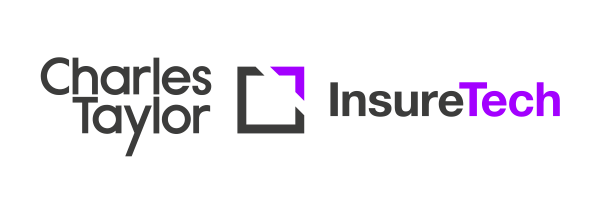It’s a 24/7 digital world, where consumers are used to ordering everything online, from flights to shoes to food. The pandemic accelerated this trend, with McKinsey in 2020 stating that the business world had “vaulted five years forward in consumer and business digital adoption in a matter of eight weeks.”
Against this backdrop, many insurance brokers in the market have recognised the need to increase the digitalisation of their businesses, citing their desire to improve customer service. That’s according to the recent Broker Barometer research from Aviva.

220 general insurance brokers, 70% of respondents said they were interested or very interested in further digitalisation
Aviva Survey
According to Aviva’s survey of 220 general insurance brokers, 70% of respondents said they were interested or very interested in further digitalisation or automation, with “improving customer service” the top reason given. Almost 40% of brokers cited gaining competitive advantage (39%) and increasing new business (37%) as reasons for furthering digitalisation.
Other reasons given included finding new market opportunities (27%), remaining competitive (22%), and consolidations (12%).
Customer focus could be cause for concern
These are all compelling reasons for increasing digitalisation, and what’s especially interesting is the focus on customer service and new business. This implies a focus on the front end – on digitalising customer-facing operations, rather than on increasing efficiencies in the back office or improving productivity.
On the one hand, this customer focus is positive. On the other, it gives some cause for concern, as it could imply a lack of holistic thinking when it comes to what digitalisation really is.
Think of it like this: brokers – and the insurance industry as a whole – did a huge amount of work in 2020 to adapt to lockdowns with impressive speed. They set up working from home and many increased their cloud-based operations. The fact that many had already dipped their toes into using cloud services such as AWS or Microsoft Azure helped to expedite that shift into digital.
Adaptation vs true digitalisation
However, this was not digitalisation in its fullest sense of reimagining processes. Many businesses simply digitised existing processes without taking the time to review them to see if they needed to be improved. Now that remote working has morphed into the mix of home and office working known as ‘hybrid’ – and many employees are returning to offices – a lot of even that basic digitisation is not being used.
As an example, consider that while many brokers migrated onto Office 365, SharePoint, and Teams on Azure, they are still emailing excel files to each other and to carriers. Digitalisation involves more than just adopting new technologies to speed up old processes. It means coming up with new and better processes to take advantage of the possibilities that these new technologies offer.
As one broker client explains: “With remote working, we’ve gone from having half a dozen managed environments to hundreds of managed environments. That’s not sustainable without proper planning and change management.”
By indicating that they are mostly concerned with increasing their use of front-end software to attract and convert prospects into customers, and to improve customer service, there is a risk that this still feeds into the siloed approach to technology adoption that has been a feature of our industry over the last twenty years or more.
The benefits of a holistic approach
What is clear is that those brokers who see digitalisation in a holistic way are most likely to reap the rewards. This means looking at how to improve processes end-to-end. It means focusing on how to improve the workflow for your employees as well as improving customer service.
No one is pretending this is easy, but the opportunities are out there, for those willing to grasp them.
With an end-to-end, cloud-based broking system, for instance, you get all of this. Yes, you can create customer portals and track accounts simply and easily. But you can also improve your employees’ access to the right data in real time with straight through processing – with no downtime or rekeying – giving them a view of all the relevant information they need to make the best of their job.
You can streamline and automate workflows to help keep staff on track. You can monitor and manage performance to highlight areas for improvement. You can also consolidate data from multiple static sources into a dynamic system that eliminates the need to trace or triple-check missing information.
This all requires a shift in mindset, an end to legacy thinking, not just legacy technology. Digitalisation is as much about company processes and company culture as it is about deployment of specific technologies and then choosing a system that best fits your business priorities. That’s how our most successful broking clients have approached their digitalisation journeys. Will you be next?

Peter is a respected specialist in new business development, marketing, sales process, and account management. Previously, Peter spent 22 years working for SSP Worldwide, where he held various roles in Sales and Marketing, before becoming the firm’s Director of Broking. Before this, he was Call Centre Manager and Branch Manager at Colonnade Insurance Brokers, and at Hill House Hammond Insurance Brokers in a variety of roles.





.png)









